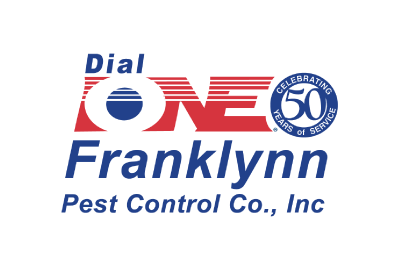How to Track Down Termites
In general, termites create colonies around food sources. Because termites eat soft or rotting wood, they seek moist spaces. Homes, and the surrounding property, can accidentally create prime environments for termite colonies. These situations encourage termites to move from their natural habitats into developed areas. Conducting a quick termite inspection can help solve your problems. The following scenarios are the most likely reasons why you will start to see termites in most likely to attract termites to your home.
PILES OF WOOD
Firewood and woodpiles can attract subterranean termites and drywood termites, drawing them closer to your home. Then, termites will migrate from the piles of wood to the housing structure, causing great damage inside. To avoid an invasion, stack wood 20 feet away from your home and keep it at least 5 inches off the ground.
EXCESS FOLIAGE
As they rot, dead trees and stumps attract termites. Termites will migrate from this excess foliage to your home. To prevent this, clear stumps and dead trees from your yard.
TREE LIMBS AND LEAVES
Tree limbs and leaves that touch the roof attract termites to your home. These branches give termites a pathway from the ground to your house. Also, tree limbs can damage your roof and cause roof leaks conducive to termite activity. Regular tree trimming can dissuade termites from migrating to your roof.
MULCH
Like tree limbs, mulch can draw termites closer to your home. The wood chips retain moisture, providing an attractive food source. Lower the likelihood of termites by keeping mulch at least 15 inches from your foundation.
CLOGGED GUTTERS
As leaves and twigs build up in your gutters, the excess moisture softens or rots your roof. These soft spots allow termites to penetrate your home. Clean gutters lower the opportunities for termites to invade by preventing a soft or rotting roof.
Formosan Termites with wings
SIGNS OF TERMITES-FINDING THE TERMITE NEST
Several key clues signal that termites may have created a colony in your home. Even if you don’t spot an actual termite, they can quickly and quietly damage your property. Although they may seem small, homeowners should immediately consult a professional upon finding any of the following signs of termites.
Termite Mud Tubes along the cement pier of this property
TERMITES WITH WINGS
Termites shed their wings shortly after they find a mate, leaving behind an obvious sign that they are occupying a space. If you see wings on your porch, in windows, or other places around your property you may have a termite infestation.
TERMITE MUD TUBES
Subterranean Termites build mud tubes to retain moisture and commute between their food source and main colony. If you see mud tubes, you will probably find more termites inside your home.
TERMITE FRASS
Drywood Termites leave small droppings, known as “frass” which can look like grains of sand or finely ground coffee grinds. If you find these droppings, your home may have termites.
Structural damage created by termites
STRUCTURAL TERMITE DAMAGE
In the later stages of a termite infestation, homeowners may notice damaged wood. A pest management company can tell you if the damaged wood came from termites or another structural issue.
Frequently Asked Termite Questions
Debunking common termite misconceptions empowers homeowners to protect their property. Termite limitations and preferences reveal the key areas where they enter and damage homes. While termites are destructive, you can discourage them from creating a colony in your home with the following tips.
DO TERMITES REALLY EAT WOOD?
Termites eat wood and anything containing cellulose, such as wallpaper, books, boxes, carpet backing, drywall and furniture. In their natural environment, termites support the ecosystem. They digest rotting wood, turning it into humus, an organic material that improves soil. When land development displaces termites, they can occupy and destroy buildings.
CAN TERMITES EAT THROUGH PLASTIC?
Termites can eat through many materials such as plastic, silicon caulk and roofing materials.
DO TERMITES EAT CONCRETE?
Termites cannot eat concrete. Because termites fit through tiny cracks in concrete, homeowners may think termites chewed through this tough barrier.
TERMITE TREATMENT AND RENEWAL
Homeowners should schedule termite inspections during three key times.
1. Prospective home buyers should consult a pest control company during the purchasing process. An inspection can reveal termite damage, allowing for treatment and repairs during negotiation.
2. If you had changes around your home’s foundation that disrupted the soil and landscaping, you should have further inspections and may need to re-apply termite treatment.
3. Homeowners should schedule a professional inspection with ongoing, preventative termite renewal every year.
Call Dial One Franklynn Pest Control Today!
Do you have any questions about what to do when termites invade? We’re happy to answer! Call now for your FREE termite estimate! Mr. Azzarello is a Board-Certified Entomologist, one of the few working Entomologist in the Louisiana pest control industry. No matter what kind of pest you’re dealing with, Dial One can help.
CALL US TODAY 504-885-3101
DIAL ONE Franklynn Pest Control
Celebrating 50 Years in Business
Joe Azzarello, Owner / Board Certified Entomologists
Marcus Azzarello, President








